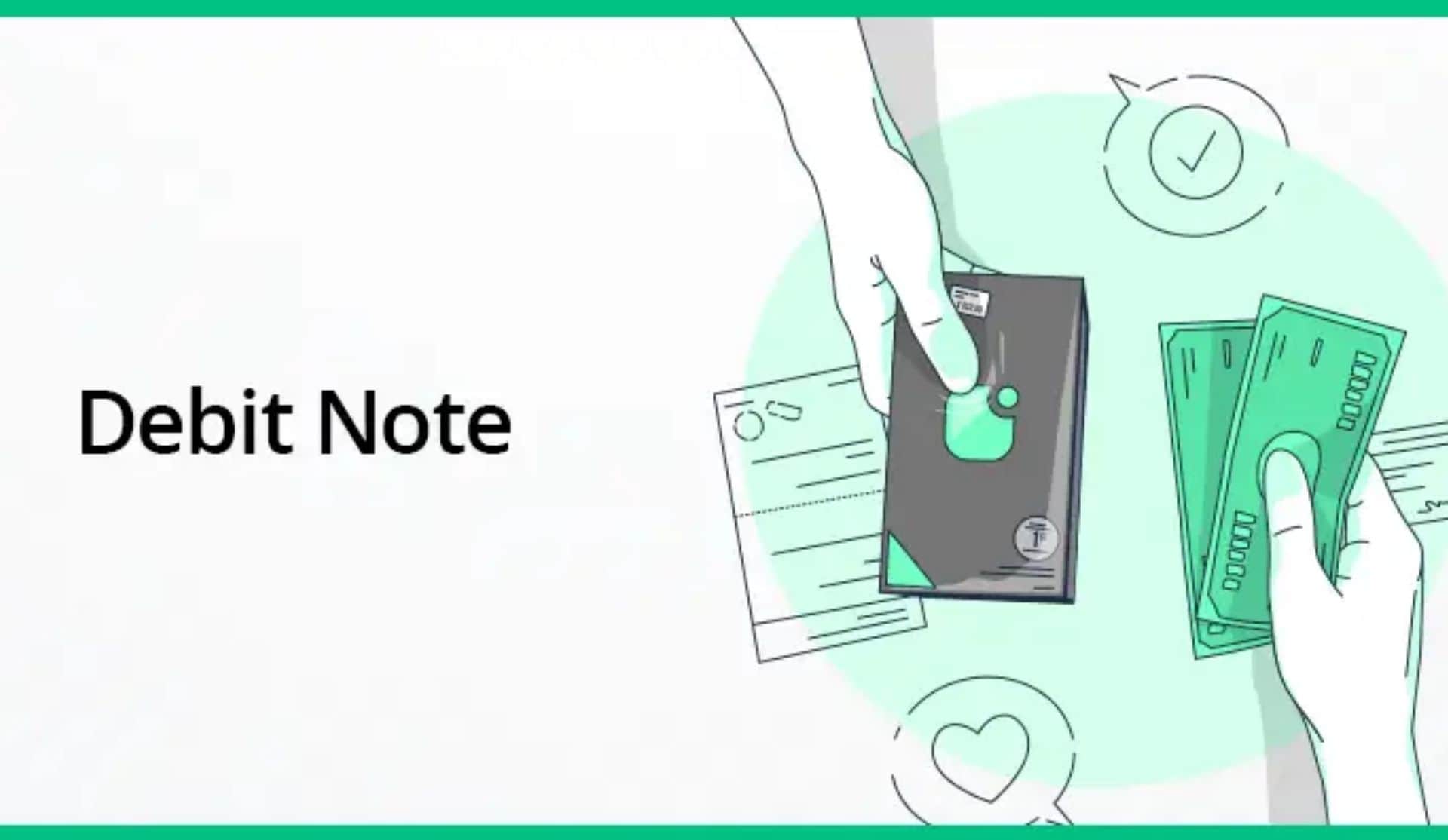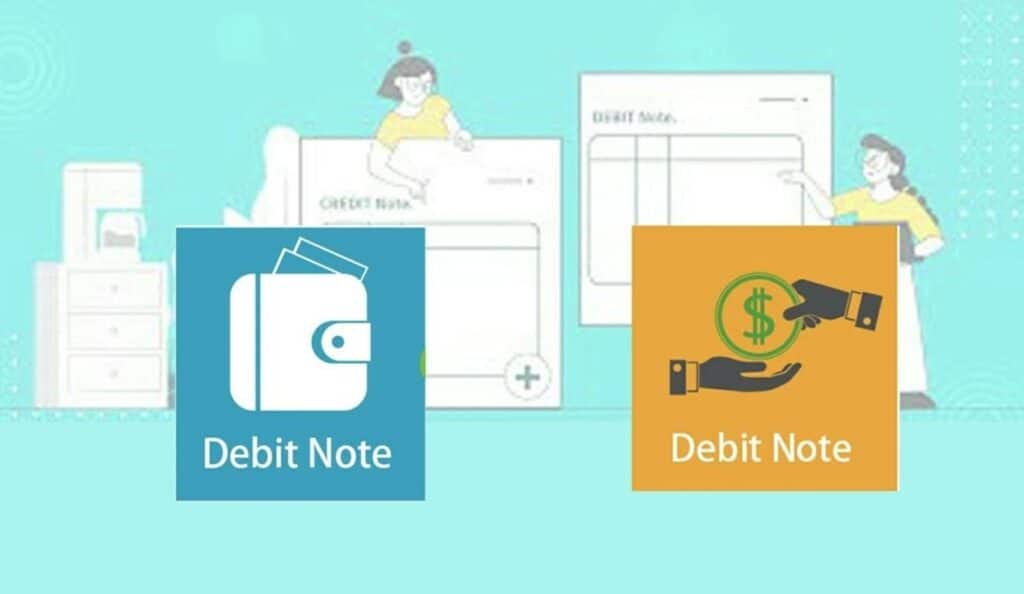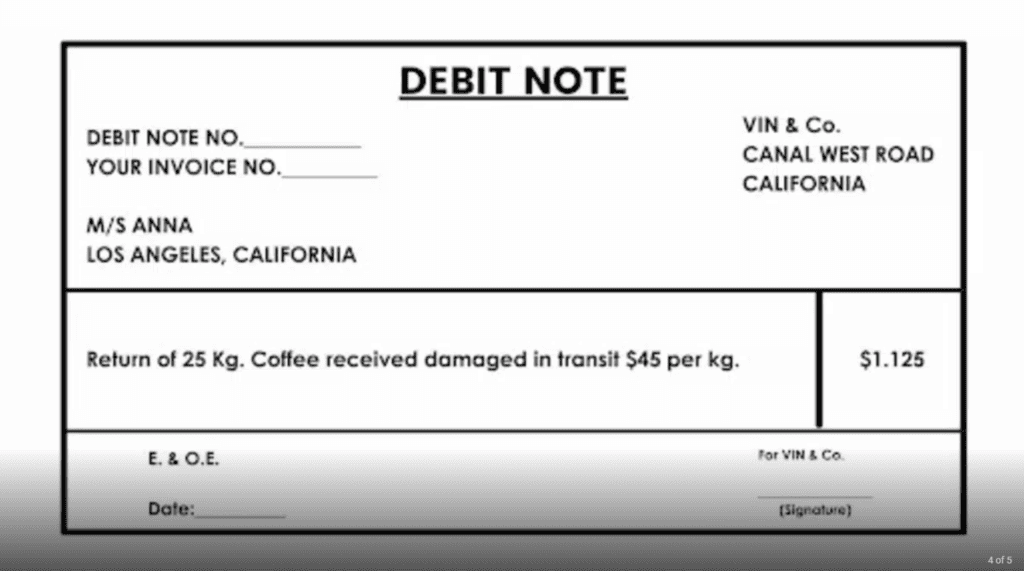
By Jeanette Stanley April 4, 2025
For business transactions and transaction IDS, financial accuracy is very important. The debit note is a useful document for all parties whenever you need to correct errors, adjust invoices, and manage returns between buyers and sellers. A debit note serves to promote transparency and maintain proper accounting, whether you face issues with overcharging, defective goods, or variation in prices.
In the USA, companies issue debit notes to formalize these adjustments, keeping organized accounting records and bolstering confidence between trading networks. Knowing how to issue and process debit notes is an important part of both efficient bookkeeping and smoother commerce.
Explaining Debit Note

A debit note is a commercial document within business transactions in making adjustments for the amount received on an invoice, commonly a follow-up invoice. It comes out when errors are made within the billed value, like being overcharged or charging the wrong price, or if goods were returned because of faults. The debit notes act as a formal request by the buyer to the seller to amend the invoice and change the due payment. It is a key document in keeping the finances precise, allowing businesses to record their transactions easily.
Though less formal in nature than an invoice, a debit note is a notice of payment adjustment of outstanding dues without any exchange of money on an immediate basis, and under Section 36 of the CGST Act, accounts of debit notes have to be maintained for a period of 72 months from the date on which the annual return is to be furnished as per law requirements.
Moreover, debit notes are usually applied in business-to-business transactions, particularly when buying on credit, to provide clarity in financial transactions. While a credit note is given by the seller to acknowledge adjustments, a debit note is given by the buyer to ask for a refund or adjustment. It can be necessitated due to over-supplied goods, pricing mistakes, or cancellations of purchases. Since companies trade tangible assets but usually settle invoices after some time, debit notes are reminders for fiscal adjustments with no immediate cash payments involved. Between then and now, sellers and buyers can enter debit or credit notes in their accounting database to monitor outstanding funds and ensure clean books of accounts.
What are the Functions of a Debit Note?
Reduction Of Amount Due from The Buyer to Seller
A debit note is a formal document used to request a reduction in the amount due from the buyer to the seller. Because adjustments frequently occur in sales and purchases, businesses utilize debit notes to maintain accurate financial records in order to deliver excellent service to customers and avoid making errors in payments. For this reason, payables and receivables should be documented properly so that you can avoid complications during the time of collection.
Price Alteration for Products
In case a product is unavailable or changes were made as mutually agreed upon, a debit note is a way businesses can formally ask for a price alteration for their products. This helps to ensure the accuracy and integrity of financial records, enabling the vendor to provide a transparent view of their relationship with the customer and to clearly capture any contractual changes made. Businesses can achieve better marketability of products, and create a fairer pricing structure for buyers, thereby improving mutual confidence and efficiency between both parties.
Correct The Quantity of Goods
Essentially, a debit note is a tool to correct the quantity of goods; if the buyer receives fewer items than originally ordered, then he/she can rectify the billing using this note. In the event that the goods are received in poor condition, or do not match what was documented in the original agreement, the buyer can issue a debit note requesting either a refund or new products in place of the existing ones. This process helps bring transparency into transactions, allowing for fair adjustments in the delivery and way of delivering results, thereby promoting trust among buyers and sellers.
Used by Concerned Party to Amend Freight
The debit note can be used by the concerned party to amend freight, in case of errors in billing or reallocation. Conversely, a credit note is delivered when an overcharge is made from the seller or there is a needed adjustment that needs to be made in order for proper financial dealings. Efficient management of freight costs using debit and credit notes helps in accurate billing, detecting discrepancies, and providing transparency in financial records.
Debit Notes In Business-to-Business

Debit Note from Buyer
A debit note is a formal request from the buyer to the seller for a credit based on a previous transaction. This adjustment benefits the buyer by reducing the amount owed to the seller. It represents credit to the buyer and debit to the seller. Debit notes are typically issued for the return of damaged or incorrect items. It accompanies the returned items and explains why they are being sent back and how much the seller has to alter the bill. The debit note may also indicate a partial refund if the buyer has already paid the full amount or may require the seller to offer credit to the buyer for future purchases.
Debit Notes from Sellers
Sellers issue debit notes to remind buyers of an old bill, or to amend a submitted bill, increasing the amount the buyer owes. They can serve as a reminder of a payment due, or as a correction to a bill.
Debit Notes in Transaction
Debit notes and credit notes are primarily utilized in company-to-company business transactions. They are accounting records of past transactions. Occasionally, they are referred to as debit memos.
Debit Note Regarding Material Returns
A debit note is a call for the refund of money due to errors of business. When goods are returned by a buyer to a seller, the debit note takes into account the accounts and calls for a refund. The seller normally sends a credit note to acknowledge this
Examples of Debit Note
Examples of Debit Notes from Buyers
In business, when a purchaser discovers damaged or defective goods, they issue a debit note to alter the sum due by them to the seller. For example, if some businesses purchase goods for Rs. 2,00,000 from a retailer and they discover 2% of them are damaged, so they issue a debit note for Rs. 4,000 to adjust their books.
Moreover, issuing a debit note is easy. It contains vital details such as the address of the seller, date, details of the items, and signatures. Utilizing software such as Microsoft Excel keeps these records in order, while automated systems simplify the process.
In another instance, Company A purchases 10,000 widgets from Company B at $10,000 credit. If 580 of the widgets are damaged, Company A issues a debit note for $580 to demand an adjustment. That implies that the seller reduces their accounts receivable, and the buyer reduces their accounts payable by $580 in order to keep their books accurate.
Debit notes assist companies in remaining clean, monitoring money changes, and keeping their accounts up to date, thus playing a significant role in correcting issues in business transactions.
Examples of Debit Notes from Sellers
For example, if they charged the buyer $6000 and the buyer should have actually been charged $7000, they will issue a debit note for the difference ($1000) and provide an explanation for the discrepancy.
Example of Debit Notes in Transaction
A debit note may be a reissued bill when a supplier underbilled previously. For instance, if a store returns goods to a supplier, they may use a debit note to request their money back. Debit notes typically contain the same essential information: the date, a number, a brief description of the original transaction, returned item details including sales tax and mention of the original invoice, and signatures of the proper individuals within the company.
Another example can be if a supplier issues a debit note when they mistakenly charged a customer $9,500 as opposed to $10,000 then they would issue a $500 note to rectify the error and adjust their accounts.
Example of Debit Note Regarding Material Returns
For instance, when Company A is returning goods to Supplier B, Company A issues a debit note indicating how much it should be reimbursed. In case the initial purchase was worth $5,000, the debit note will indicate the total amount including the sales tax with the tax and cost separated.
Once Company B receives the debit note, it will issue a credit note to verify the return and refund or provide credit to Company A.
Debit Note Template
A debit note must contain:
- The name, address, contact information, and TIN of the supplier.
- A serial number for the debit note.
- The date when the debit note is sent.
- The address, contact information, and TIN of the recipient.
- Invoice number and date corresponding to the debit note.
- Details of the goods or services, such as quantity, unit price, and tax-exclusive amount.
- The rate of tax and amount of tax.
- A signature.

Process of Debit Note
A debit note is a paper that a seller gives to a buyer showing how much the buyer needs to pay. It can let the buyer know if a payment is late or tell them about a future bill. Buyers can also use debit notes when they send back items. The debit note includes the addresses of the buyer and seller, the date, and details about the items.
In business, a debit note is employed when a seller delivers goods to a buyer ahead of receiving money. It notifies the buyer that their account has been debited, but cash isn’t given until a bill is issued. Companies record such charges in their accounting systems. Debit notes are distinct from invoices since they are usually composed in letter style and don’t demand immediate payment.
Businesses can apply debit notes to items outside of their core business, such as rent or billing errors. They can also be issued as receipts when goods are shipped, with payment to be made later when a bill is sent out. The buyer can thus return goods without paying beforehand. Debit notes could also be mailed as reminder postcards to indicate what the buyer owes. These postcards can also be used by sellers to verify whether the buyer received the original invoice and might contain information on payment, including contacts.
Conclusion
Debit notes are important for keeping financial records clear and accurate in business. They are official papers used to change invoices, fix price mistakes, and handle product returns, helping both buyers and sellers keep correct records.
By using debit notes, businesses can make their accounting easier, avoid arguments, and build trust with their partners. They are needed to fix billing errors, change shipping costs, or adjust payments. Knowing how to use debit notes is important for good record-keeping and better business operations.